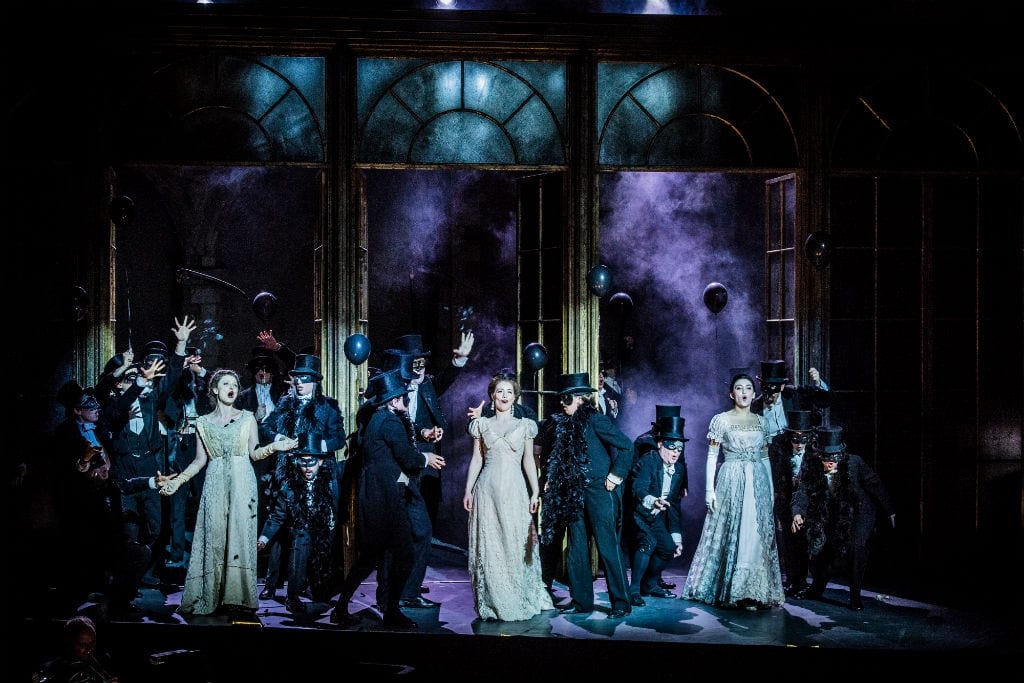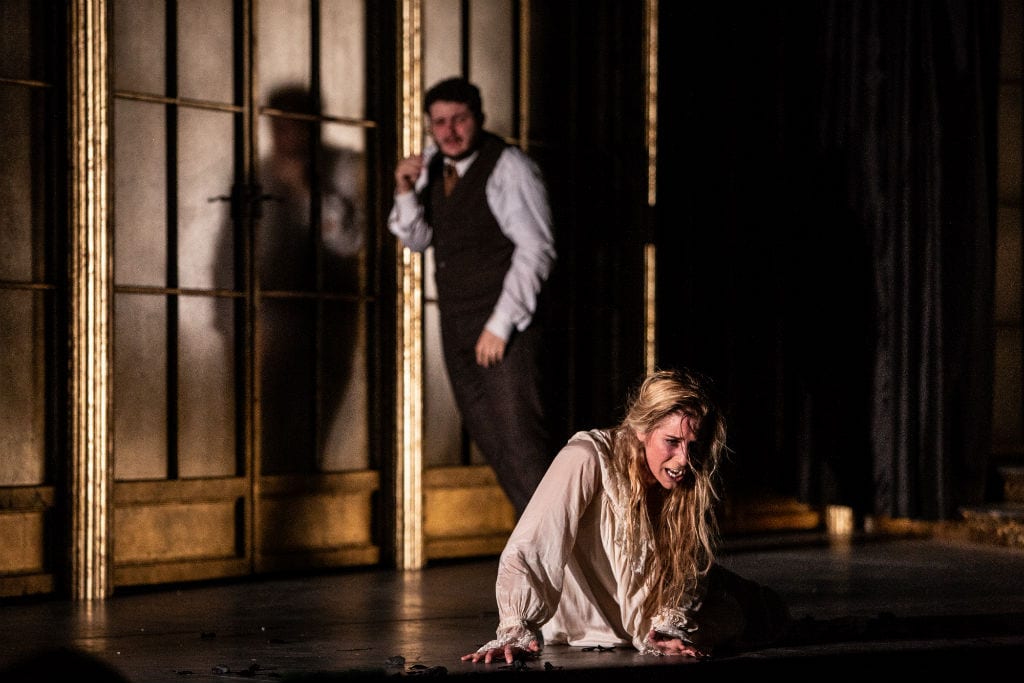‘La Traviata’ stands alongside ‘Il Trovatore’ and ‘Rigoletto’ as one of the three operas that launch Verdi’s middle period when he had attained full mastery of his craft. It was a deliberately transgressive work, confronting nineteenth-century hypocrisies head-on. It offended all the right people, as the programme reminds us, with ‘The Times’ dismissing the Dumas novel behind the first London performance in 1856 as ‘the apotheosis of prostitution’. Despite its familiarity in the opera house, the sexual and gender politics remain sadly and uncomfortably relevant in the ‘#MeToo’ era, and its exposition of the horrors of untreatable tuberculosis is a poignant and vivid testimony to an aspect of history we can feel glad to have lost. In short, a thoughtful production, such as this is, can still find many new layers and nuances in such an impeccably crafted work of art.
We begin with a recording of Violetta’s laboured breathing, which is a perfectly apt directorial intervention given the music of the orchestral prelude which anticipates the fatal final act. This is just one of many fine touches that tweak the original in wholly permissible directions to beneficial effect. Other instances would be the way the milling chorus in the party scenes are encourage to develop their own individual group narratives, the deep integration of minor characters such as Annina and Doctor Grenvil into the fabric of the drama, and the simplicity of the set design which makes full use of the width of the Holland House façade while allowing for swift changes from ballroom to domestic interior with the most minimal changes in décor and the movement of a few key props. There is a finely detailed period feel to the costumes with the usual individual twists from Opera Holland Park that reveal character and motive in advance.
Alongside the clean, carefully thought-through lines of the direction, are the neat clear layered dynamics of Matthew Waldren’s conducting, which shade the sound of the City of London Sinfonia precisely to the vocal dynamics on stage, while giving the orchestra full range in the set pieces. There is great economy in the lighting design which plays on the reflections from gilding and glass in the framing of the set, and within the limits of the space available intriguing and varied choreography is developed to provide the full swirl and giddy twirl Verdi intends for dance sequences that are intended depict both the joy and enervation of Parisian high society.

In the lead role of ailing courtesan Violetta Valéry Lauren Fagan makes all the right musical and dramatic choices – vulnerable but not a victim, embracing the pleasure principle in the two party scenes, credible in her fluctuating commitment to the possibility of love, and showing true nobility and dignity in her confrontation with Germont senior. Above all she gives a peerless rendition of the final act, with its many shifts of gear, and always resisting the temptation to reach for easy pathos. She is well matched in the Alfredo of Matteo Desole, who rides the heights of the heroic tenorial register with ease and convincingly embodies the charm and cruel excess of youthful passion. Stephen Gadd in some ways has the hardest dramatic task – Giorgio Germont is hard to lift out of cruel patriarchal stereotype, but he manages the transition to empathy with plausibility and his anger at his son’s actions has a rawness that possesses a real edge and insight.
There are no weak links in the supporting cast all of whom use the relatively scant, broad-brush outlines given to them to create convincing characters out of roles such as Flora, Baron Douphol and the Marquese d’Obigny. This is a true ensemble production and that serves to deepen the force of the central tragedy rather than diminishing it. It is hard to imagine a better introduction to this opera for someone new to it, whereas there are also plenty of subtle and effective nuances to delight the seasoned afficianado. Nor do the raucous peacocks in the park seem out of place or even much of a distraction.

